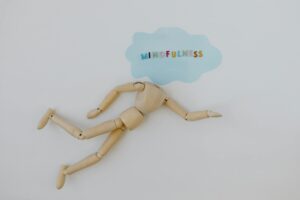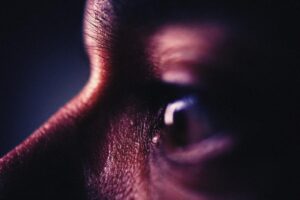The relationship between psychedelics and inspiration for artists isn’t a new topic of exploration. Since the 50s and 60s, psychoactive substances like LSD, psilocybin, and mescaline have been linked with imagination, artistic process, and surrealistic art movements. Beyond the taboo, the core focus of interest lies in how these substances can affect one’s perception, suggesting the possibility of a link to creativity, or more specifically, artistic innovation.
Psychedelics have long been known to create a heightened, enhanced perception of the world around us. A study led by David Nutt, a neuropsychopharmacology professor, showed that these substances could open the mind to new ways of thinking and perceiving. According to him, psychedelics stimulate the brain’s “imagination network” —areas typically associated with daydreaming and free-thinking — while modulating the “task-positive network,” responsible for focused, analytical thinking. This enables the brain to explore a richer, more uniquely connected inner world.
A phenomenon associated with this enhanced perception is “flow state”, described as a psychological experience where an artist is fully immersive in their creative process. Artists in a flow state often lose their sense of time and self, becoming completely absorbed in their work. Scientists believe that psychedelics can induce this flow state, accounting for many anecdotal reports of increased creativity during psychedelic experiences.
A fascinating aspect of psychedelic experiences often discussed is ego dissolution — the loss of self-identity. Here, the usual boundaries between the self and the outer world become blurred. Research published in the Journal of Psychopharmacology shows that experiencing ego dissolution while under the influence of psychedelics could inspire artistic expression by enabling users to explore personal and philosophical issues from an entirely new perspective, which may serve as a potent catalyst for creativity.
The role of ego dissolution in the imaginative process is where surrealism as an art movement joins the discussion. Surrealism is characterized by expressions of the irrational and the subconscious mind, and this reflection of dreamlike states connects closely to the psychedelic experiences’ outcomes. And it wasn’t uncommon for artists like Salvador Dali to turn to hallucinogens for pushing the boundary of expanded consciousness, resulting in a more dream-like quality in their work.
Psychedelics’ effects are not limited to enhancing visual artistry; they have also significantly impacted musical expression. Iconic bands of the ’60s and ’70s, like The Beatles and Pink Floyd, reportedly used LSD to spur their creativity, leading to some of the era’s most iconic and groundbreaking music. Other fields like literature, photography, and film have also witnessed the use of psychedelics as a tool of creative exploration.
Despite these fascinating insights, it’s essential to acknowledge that the link between psychedelics and creativity isn’t straightforward. While there are numerous accounts from artists claiming that these substances unlocked their creative potential, skeptics argue whether this inspiration is directly due to the drug or if it is merely a placebo effect.
More controlled scientific research is required to establish a direct link between psychedelics and artistic innovation. A few recent studies have attempted to explore this relationship, but their focus was primarily on expanded consciousness and self-exploration rather than measuring creative output directly.
It’s also worthy of note that while psychedelics may be useful in the artistic process for some, they are not guaranteed to work for everyone. Deciding to use these substances should always be a thoughtful, well-informed decision taking into account individual characteristics, potential side effects, and legal restrictions in certain jurisdictions.
As our understanding of both the artistic process and the effects of psychedelics expands, so too will our understanding of their complex relationship. Results so far hint at a fascinating link between these substances and increased creativity, but more research is needed to establish causality and the mechanism behind it.





